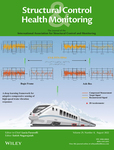Semi-supervised implementation of SVM-based error-correcting output code for damage-type identification in structures
Summary
Supervised learning techniques are the most commonly used type of learning techniques for damage-type identification tasks. A necessary condition for these supervised learning approaches to be successful is the availability of a sufficient amount of labeled data corresponding to various possible damaged and undamaged states of the structure. Unfortunately, in several applications, it is either impossible or very costly to acquire sufficient labeled data for all damage scenarios; however, unlabeled data are available in plenty. It will be of great use if one can utilize these unlabeled data to improve the performance of supervised damage identification methods. Semi-supervised implementation of support vector machine (SVM) based error-correcting output code proposed in this paper iteratively converts unlabeled data into labeled data in a principled way to increase the number of labeled data for training, thereby improving the performance of the damage-type identification method. The performance of the proposed technique has been validated on several experimental ASCE benchmark datasets obtained from a 4-story 2-bay by 2-bay steel frame. It was observed that the damage-type identification using semi-supervised implementation outperforms its supervised counterpart in terms of generalization as measured using the five-fold cross-validation error. The aforementioned comparison of the five-fold cross-validation errors was performed after the hyperparameters of both supervised and unsupervised methods were chosen optimally. The conditions for the applicability of the semi-supervised method have also been discussed briefly.




